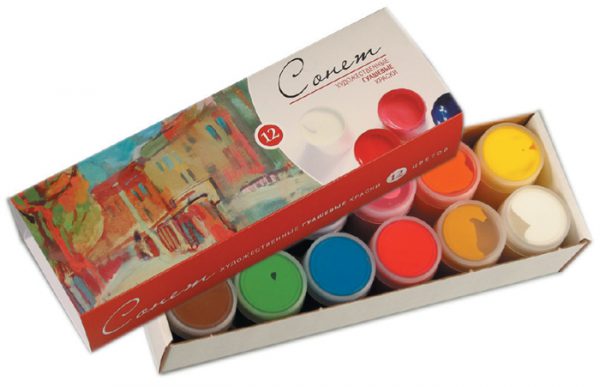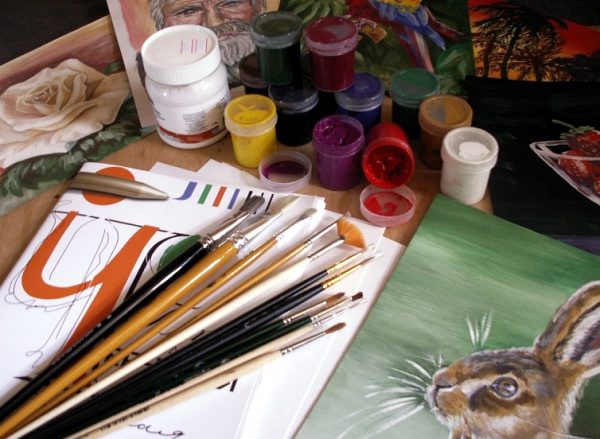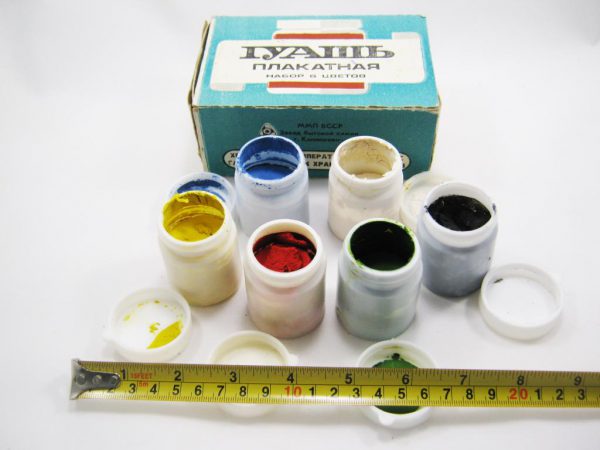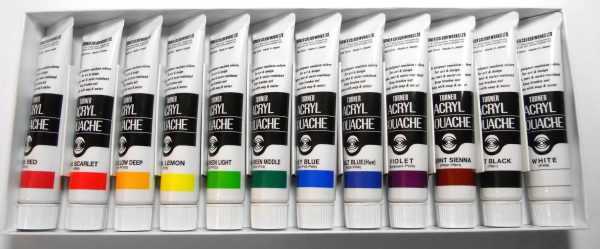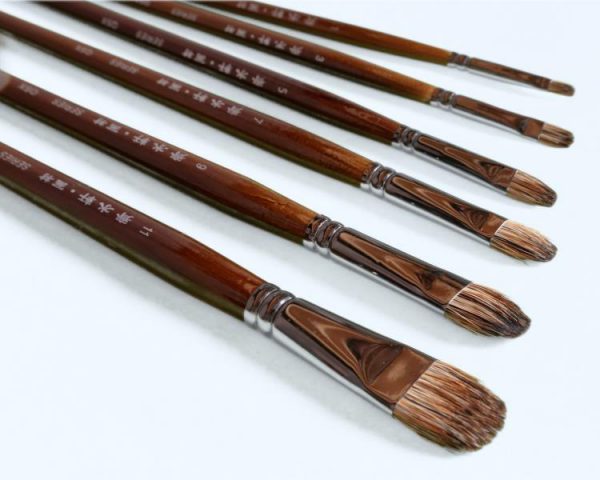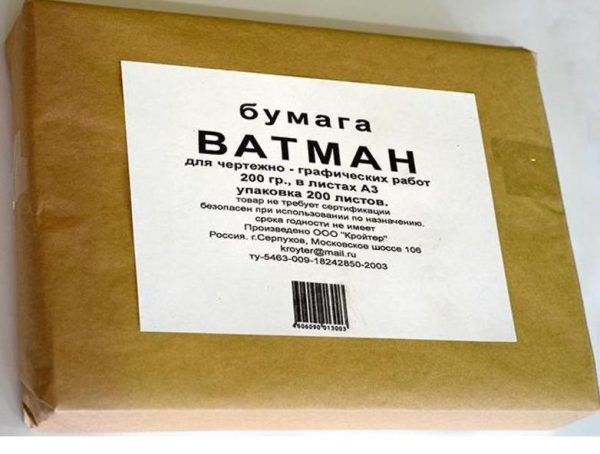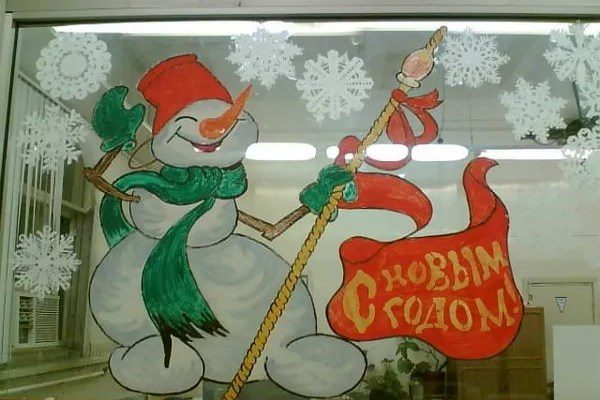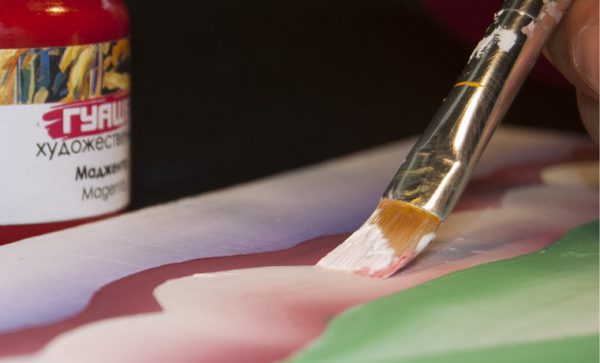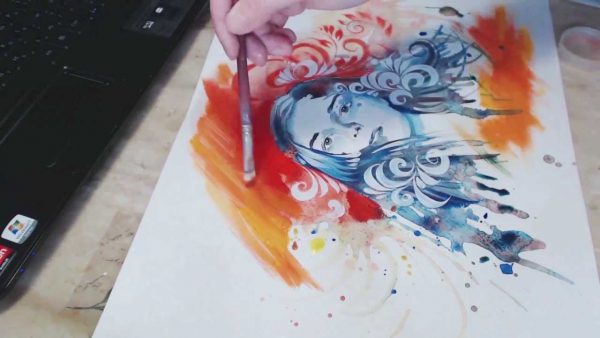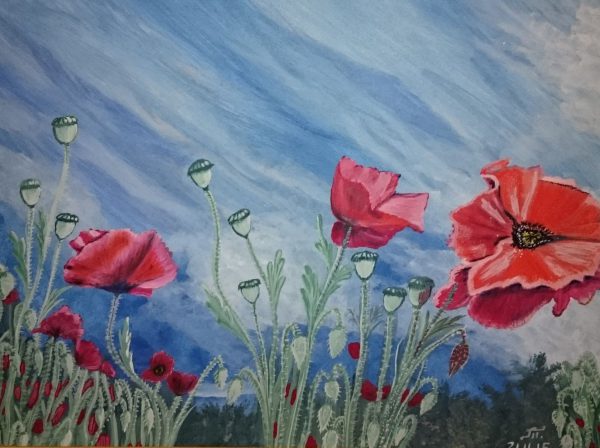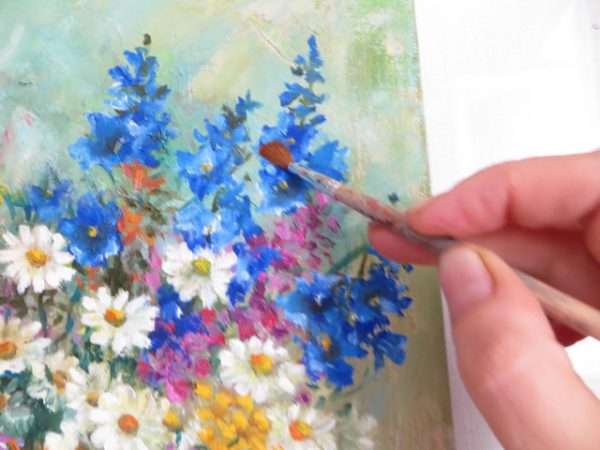Gouache is a popular material among professional artists and beginners. It’s convenient to work with it, the range of products is great, as is the color palette. Gouache drawings are very beautiful, “juicy”, can be performed using different techniques. To draw an image with such paint, you need to familiarize yourself with its features and secrets.
- Tips for Beginner Artists
- Gouache - basic information
- Types of gouache
- Art
- Poster
- Fluorescent
- Acrylic
- The choice of brushes for painting
- Surfaces for the base of the picture
- Paper
- Plywood
- Glass
- the cloth
- Gouache painting techniques
- Glaze
- Pastous technique
- Sgraffito
- Mixed media
- Secrets of working with gouache
- Master class: painting with gouache
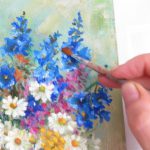
Tips for Beginner Artists
Want to paint real paintings in gouache? You should start by purchasing the right materials. For beginners, you will need paper, a box of paints, brushes, a palette for mixing tones, dishes for water, a simple pencil. In the minimum set there are 12 basic colors, when they are combined, they receive a wide variety of colors and shades. More experienced craftsmen also have other tools, devices - for example, a palette knife - a device for mixing and removing gouache residues, applying thick paint to the canvas.
At the beginning of the work, gouache painting of the lightest images — mountains, trees, landscapes — is recommended. Go to still lifes or portraits is only if you have certain skills, after visiting painting lessons, fine arts. Sketches should be carefully drawn with a pencil, this will help to avoid errors on paper.
to contents ↑Gouache - basic information
Gouache is a type of water-based paint, it consists of ground pigments, white and water-based adhesives. The latter include starch, gum arabic, dextrin. Also, some types of paint contain fruit gum, glycerin, honey, oil, acrylic.
Its main difference from watercolors is its opacity. Gouache was created on the basis of watercolors by introducing titanium white paint into it to increase the density, partially brighten tones, and muffle them. For children's creativity, paint is used, additionally containing PVA.
Working with gouache is quite simple, drawings are applied to different types of materials (paper, glass, fabric, stones, etc.). With the help of such paint, you can implement unconventional ideas: gouache is painted on the skin of the face, body, hands, nails. Tints are sold in jars of 10-30 ml, but there are professional packs of 500-1000 ml.
The advantages of gouache are obvious:
- excellent hiding power, the ability to cover dark spots with light colors;
- moderate cost, cost-effectiveness;
- quick drying;
- good solubility in water;
- ease of error correction;
- the ability to dilute dried paint with water.
All these properties allow you to conduct creative lessons with children using gouache. It will help you learn how to draw beautifully and correctly, while the technique can be completely different. The finished drawing does not get dirty, it does not need to be varnished, unless, when executed on glass, fabric or ceramics.
to contents ↑Types of gouache
Not all gouaches have universal properties. Depending on the species, quality may vary.There are even dry powders that need to be diluted to the required consistency with water, although they are rarely found on sale.
Art
This type of paint is also called professional. She is maximally focused on creating large, beautiful paintings, is distinguished by matte velvety, high hiding power. A smear of material in one layer will be bright, saturated, it will easily overlap the watercolor. Usually, art gouache is sold in 36 bottles in one set (it can be found by the OKPD 2 code among stationery). To create some brands of art paint using expensive gum arabic.
to contents ↑Poster
Such paint is used to draw posters, theater decorations, so it includes bright pigments and glue for durability and quick drying. In addition, instead of whitewash, kaolin is present here, which makes the drawings unsuitable for rapid burnout. You can work with gouache on plywood, cardboard, canvas. Most often, poster gouache is sold in sets of 24 jars.
to contents ↑Fluorescent
In addition to the classic color options, on sale you can find original fluorescent paints. They are suspensions of fluorescent pigments - a solution of dyes, phosphors on organic resins. PVA glue, antiseptics and plasticizers are added to gouache.
Thanks to the introduced pigments, the paints look bright, have the property to glow under the influence of ultraviolet radiation. The hiding power of such gouache is lower, so they are applied only on white bases with thin strokes. There are even neon colors - they themselves glow in the dark.
to contents ↑Acrylic
Acrylic-based gouache is not common, but its properties differ from those of ordinary paint. Thanks to acrylates, the product ideally grasps with any surfaces, the pattern is brighter and most resistant to mechanical damage.
to contents ↑The choice of brushes for painting
Too soft brushes are not suitable for working with gouache. It’s best to buy brushes made of squirrel wool - they are moderately soft, have a sharp tip, allow you to apply thin strokes with clear contours. But for large drawings, such products may seem insufficiently elastic, and work will slow down. Also, the disadvantages of squirrel brushes include too fast abrasion.
Column brushes are more durable and resilient, but their price is an order of magnitude higher than the cost of squirrel. For shading, creating a background, filling, you can use goat hair brushes, synthetic products (nylon). The texture surface on canvas and paper is good when using brushes made of pork bristles.
If gouache is diluted with water to a more liquid consistency, a badger brush is a good fit. To create special effects, professionals sometimes use rubber, silicone brushes, but they are not suitable for teaching children and beginners. To paint a still life, you can also use foam sponges, rollers, ordinary paper napkins. Some techniques involve working with a thread instead of a brush.
What brush shape to choose for gouache? Here are the key recommendations:
- flat - used for filling the background, applying wide strokes, performing large parts;
- round and oval - universal, change the thickness depending on the pressure;
- contour - used to draw individual parts;
- fan - they fill in the background, used in the technique of glazing.
Surfaces for the base of the picture
Gouache can create real masterpieces on almost any canvas and material, the main thing is that it be dense.
Paper
It is recommended that beginners make the lightest drawings on a paper basis. You should choose a Whatman A3 paper or A4 paper, but with increased density. Whatman paper is smooth, the paint falls on it perfectly, while the base does not soak. If the paper is thin, from gouache it will immediately begin to warp.
A good option for creating a picture is cardboard. It should be white, uniform in texture.In some cases (depending on the specifics of the picture), the use of color or tinted cardboard is allowed. Corrugated cardboard and gouache, on the contrary, are incompatible - the base is deformed over time.
to contents ↑Plywood
Gouache on plywood is a pleasure. This material will never get wet if it is of high quality and smooth. There should be no stains on the plywood that can even come out from under the paint layer.
Glass
Gouache can also be used to work with glass. Usually she painted glasses, plates, stained-glass windows, crafts. It is recommended that you first sketch with a pencil on a regular sheet of paper, then transfer it to the glass using a carbon copy. After you can apply the paint.
Unfortunately, the water base of gouache does not allow you to save drawings on glass for a long time. But this can be a big plus, because you can depict new pictures every time - for example, make drawings for the New Year on a window pane. The child will like to carry out his ideas, easily adjusting the details with a damp cloth. Gouache lays well on glass bottles - does not flow, dries quickly. The finished product can be varnished on top.
to contents ↑the cloth
Trendy prints on t-shirts, skirts and trousers are now at the peak of popularity. Also, craftswomen making curtains and products for children draw on fabric. Of course, the usual gouache pattern on the fabric will not last long, unless, with careful handling. Water, washing will wash off the paint completely. Therefore, to fix the print, varnish or glue is introduced into the paint or the finished drawing is coated with a special varnish for the material. If it is supposed to wash such a thing, it is better to use not gouache, but special acrylic colors.
to contents ↑Gouache painting techniques
There are a huge number of techniques by which you can learn to draw - step-by-step recommendations, videos, master classes are on the Internet. Even the unique technique of “right-brain drawing” has been developed - you do not need to use logic to create a drawing. All work lasts several minutes, as a result, an original picture is obtained. The following are the most popular gouache painting techniques.
to contents ↑Glaze
By glazing, we mean the phased application of transparent, translucent layers of gouache after the previous layer has completely dried. This will allow you to get complex tones by optical mixing color. Applying paint before drying the first layer leads to damage to the picture, obtaining a "dirty" color. The transparency effect is achieved by diluting the paint with water. The number of layers is no more than 5.
to contents ↑Pastous technique
In this case, thick strokes are applied to the working surface without diluting the gouache. The texture, specific tones will depend on the direction of the strokes. For an ideal result, PVA is added to the gouache - it will not let the paint layer crack, although thick strokes still do not need to be applied.
Sgraffito
In this technique, first light strokes are applied to the base, then, after drying, they work with dark paint - black, blue, etc. After the final drying of the drawing, they take a special needle, a sharp stick or knife and scratch the upper layer, exposing the lower one. The technique is akin to engraving, but performed in the first few minutes (gouache dries quickly). As a result, original textures are created, especially in the foreground of the picture.
to contents ↑Mixed media
In this embodiment, different techniques are used, for example, the background is shaded, the pattern on it is made with acrylic paints. Gouache is also used in one painting along with watercolor, oil, pastel, tempera.
to contents ↑Secrets of working with gouache
There are a number of tips that artists always follow when working with paint. Here are the main ones:
- draw from dark to light - first draw dark tones, then put glare, light spots;
- to connect shades, not forgetting about the light circle (the colors that are nearby give tones without dirt, gray admixture);
- to draw a contour, take a tone from the opposite sector;
- draw shadows with blue, green, purple, but not black;
- correct blots after the gouache is completely dry;
- when drying gouache will brighten, therefore it is necessary to take brighter colors;
- instead of a palette for mixing paints, you can use cardboard, a board;
- clouds in the sky are painted with ordinary whitewash, grass with green paint, and trees with a lighter green tone than grass.
It is necessary to advance in mastery in stages, from simple to complex, then drawings will come out all the more successfully.
to contents ↑Master class: painting with gouache
A simple example of how to make a real picture (winter tree) step by step:
- You should start with the background - snow, sky. In the area where the tree will be, it is necessary to make the sky brighter.
- After drying the background with a pencil, draw a tree with twigs. Then draw the contours with paint, having well drawn the trunk, brown branches, at the tips make them white with snow. On the main branches, you should draw more small branches.
- Make the detail. To do this, lighten small branches, and “strengthen” the trunk with dark brown, black gouache. Add branches to gray shadows.
- To make a brighter picture, you can enter pink, blue in the background - like shades of the sky.
To decorate the picture, you can also draw animals, birds, a garland - everything that the fantasy tells. Gouache will quickly become a favorite material for creativity, because working with it is easy and fun!

